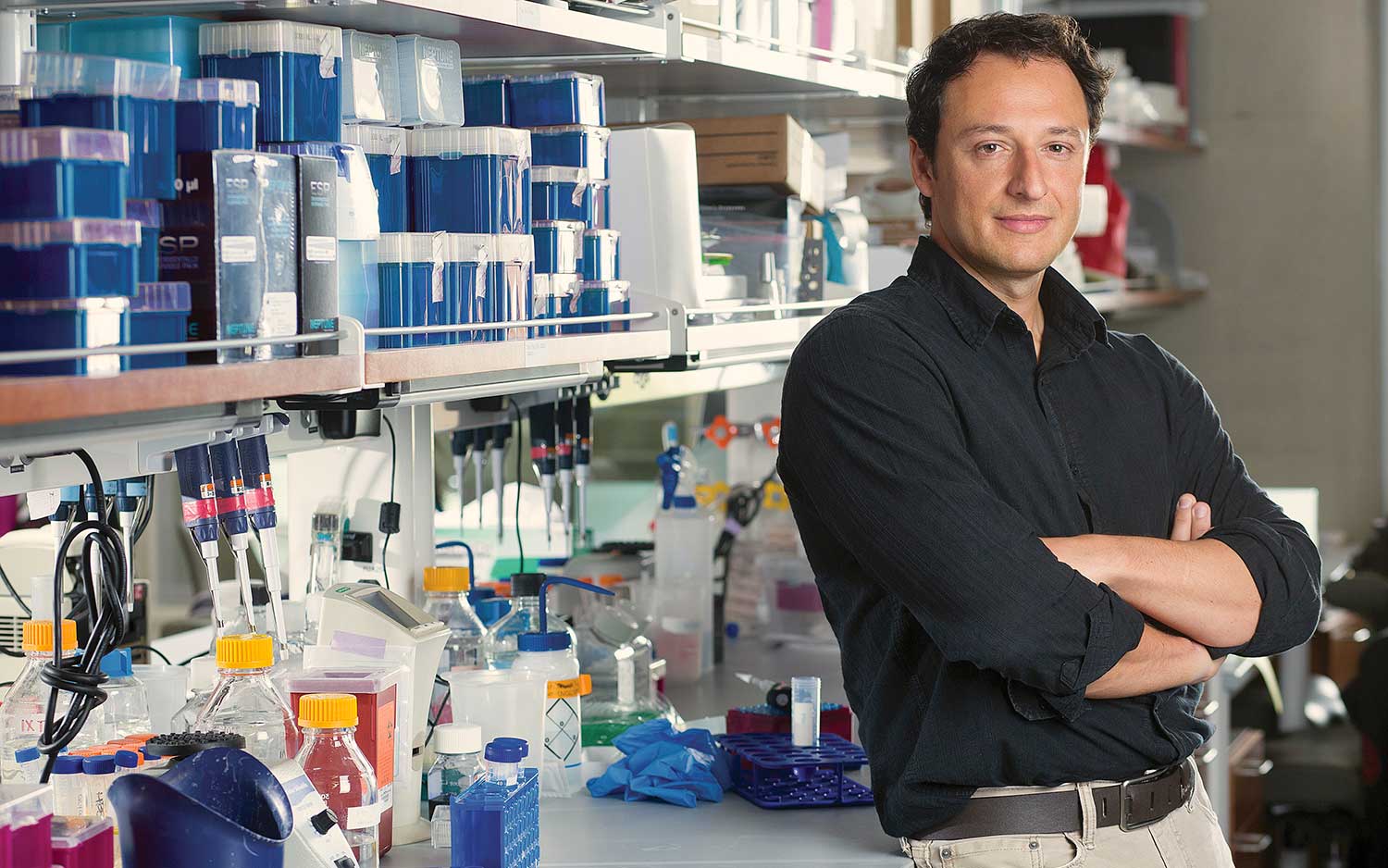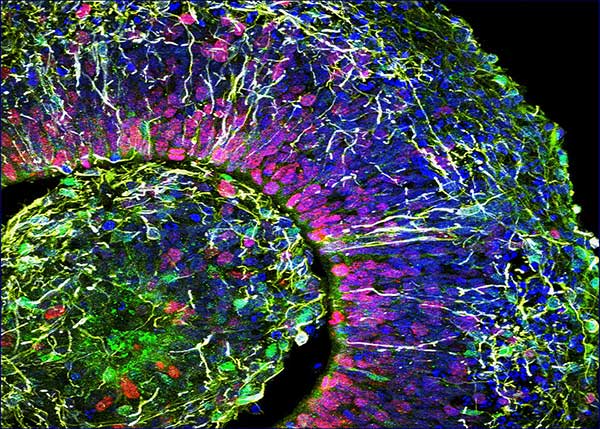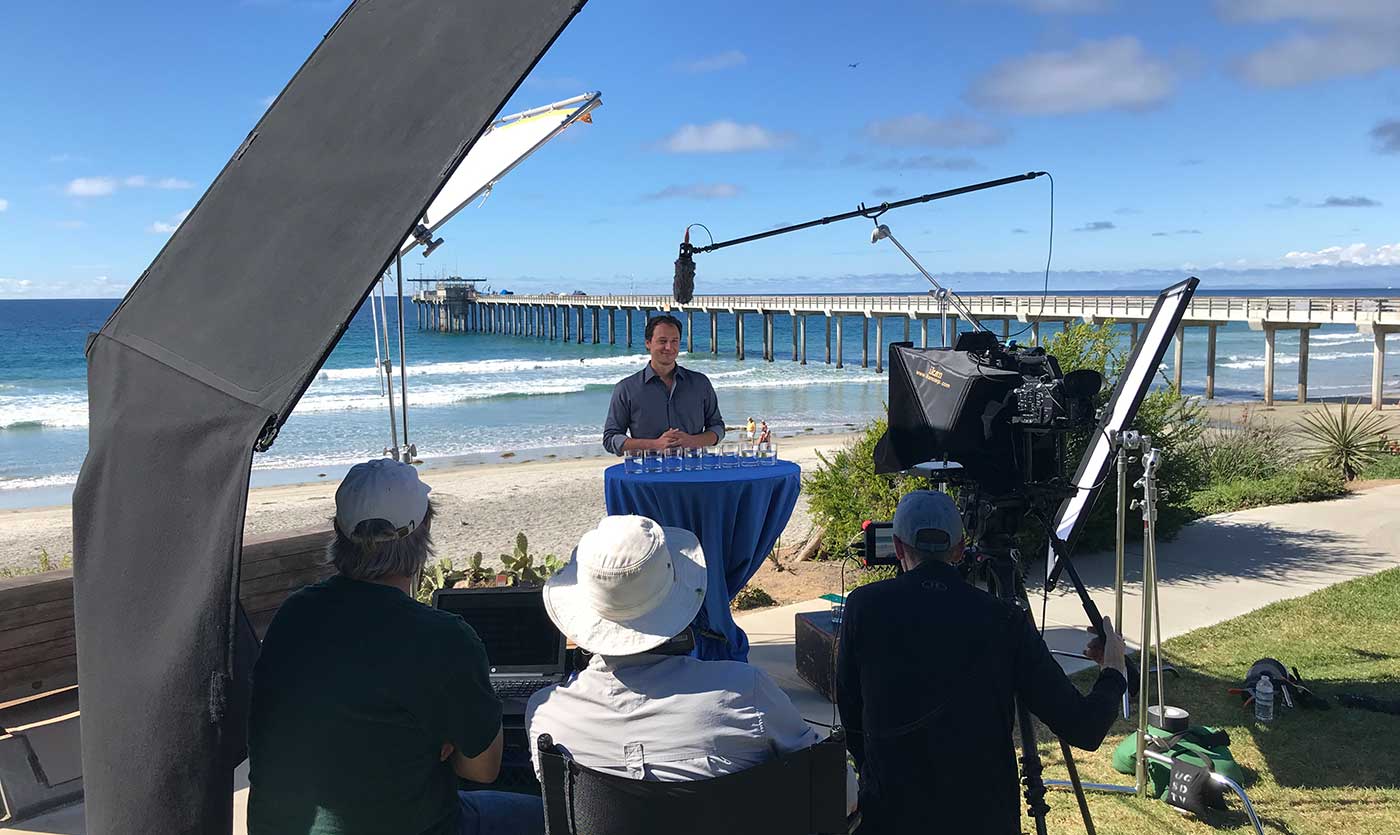By:
- Heather Buschman
Published Date
By:
- Heather Buschman
Share This:

Alysson Muotri in his lab at the Sanford Consortium for Regenerative Medicine
UCTV Launches New Stem Cell Channel
Viewers to go behind the scenes from autism to zebrafish
Alysson R. Muotri loves stem cells. He runs a lab that studies them, and he’s inspired by the fascinating work colleagues around him are doing. He’s so excited that he wants to tell everyone about it.
“I’ve long felt a little selfish knowing about all this cool stuff, and not sharing it with people,” Muotri said.
As co-director of the Stem Cell Program at UC San Diego School of Medicine and faculty member in the Sanford Consortium for Regenerative Medicine, part of Muotri’s job is engaging the public in stem cell research. At first, he considered hosting a series of faculty talks, but getting people to campus at a specific time is hard. Then he thought videos might be better.

Stem cell-derived “mini-brain” model of autism spectrum disorder
“We can meet people where they are, at any time they are available, and offer a more visual experience—showing people what it’s actually like to work with stem cells,” he said.
That’s when UCTV’s new Stem Cell Channel was born.
UCTV is a public-serving media outlet featuring programming from throughout the University of California. Now, every other Thursday at 8 p.m., viewers can watch a new episode in which Muotri gives a behind-the-scenes tour of a different stem cell research topic. The episodes, called “Stem Cell Science with Alysson Muotri,” will appear on UCTV’s cable channel, available in San Diego, Los Angeles, the Bay Area, Inland Empire and Santa Barbara, with captioning in Spanish and Portuguese. In San Diego, that’s channels 135 (Cox Digital), 1231 (Spectrum Digital) or 99 (AT&T). The Stem Cell Channel is also available via UCTV’s iPhone app or online at uctv.tv/stem-cell.
Stem cells are special for two main reasons: 1) They self-renew, making a nearly limitless supply of themselves and 2) they can differentiate, or specialize, into just about any cell type, such as brain, heart or pancreatic cells. That means the number of ways they can be used to study human development and disease and develop new therapeutics are nearly limitless, too.

Muotri and the UCTV crew film at episode at Scripps Pier
In the new video series, Muotri and team plan to cover a lot of “brain stuff.” In his own lab, researchers are building “mini-brains” out of stem cells and using them to figure out what goes wrong in various neurological diseases, and how to fix it.
“We show people working with stem cells and making mini-brains right in the lab,” he said. “I don’t think most people can picture what that looks like. I don’t think this has been done before, at this level—we are bringing viewers along to participate in the discovery process with us, and providing a reliable source of information.
“I love how surprised and excited the camera crew gets, when they realize what we’re doing. They’re curious and asking questions. I can immediately see we’re reaching people.”
In the “non-brain” episodes, Muotri will take a deep dive on blood stem cells and pancreatic cells — and how these are being used to develop new therapies for leukemia and diabetes, for example.
An episode on blood stem cells is Muotri’s favorite so far.
“We went to David Traver’s lab in the Division of Biological Sciences to see how blood cells are formed in zebrafish, then talked to Catriona Jamieson about how that information forms the basis for new leukemia therapies that she’s testing in clinical trials in our Alpha Stem Cell Clinic,” he said. “We go from basic research to clinical application in a single episode. I was amazed.”
The Alpha Stem Cell Clinic at UC San Diego Health is one of five such clinics in a network designated by the California Institute for Regenerative Medicine (CIRM), the state’s stem cell agency. The clinic is the cell therapy arm of the Sanford Stem Cell Clinical Center that specializes in early phase, first-in-human trials. Jamieson is director of both the Sanford Stem Cell Clinical Center and CIRM Alpha Stem Cell Clinic. The leading-edge research in these laboratories is made possible in part thanks to support from CIRM, the National Institutes of Health and philanthropist T. Denny Sanford.
Muotri hopes UCTV Stem Cell Channel viewers will walk away with an appreciation for scientists as people and an understanding of what’s possible—and what’s not.
“Many of these projects will turn into something useful as a therapeutic, but some won’t,” he said. “There’s a risk in science. Sometimes it’s a miserable failure, but we always learn something new. Scientists are normal people, and I’m lucky to work with them as my colleagues. They are good scientists, and human beings who care about others.”
Share This:
Stay in the Know
Keep up with all the latest from UC San Diego. Subscribe to the newsletter today.



